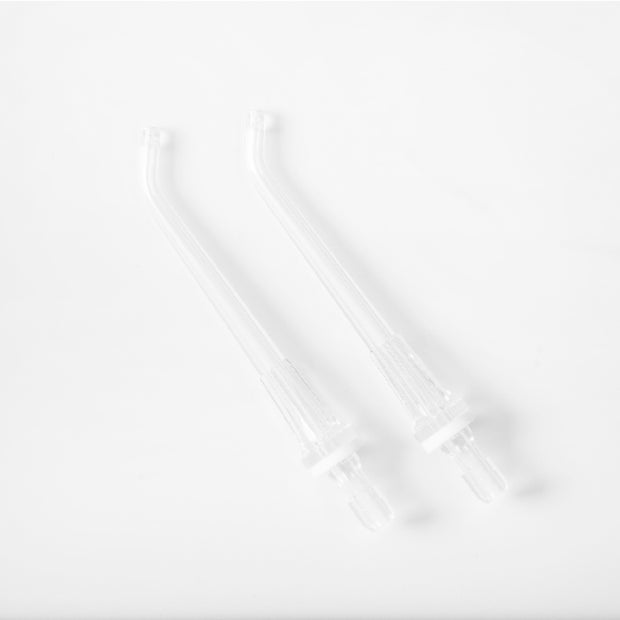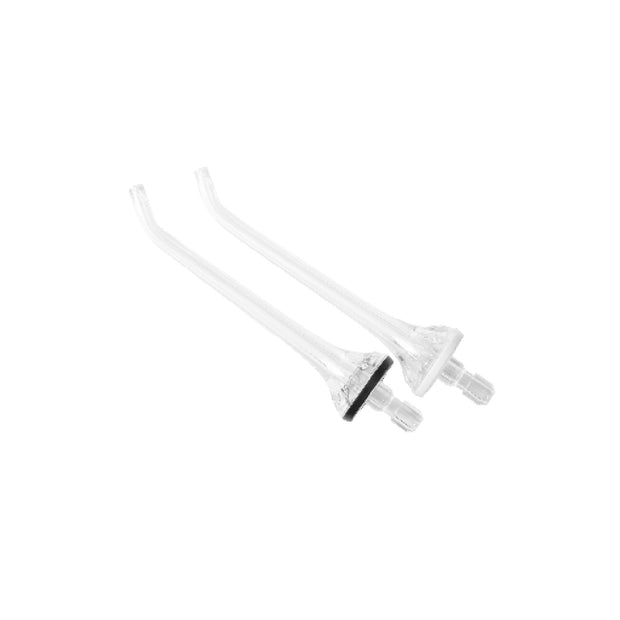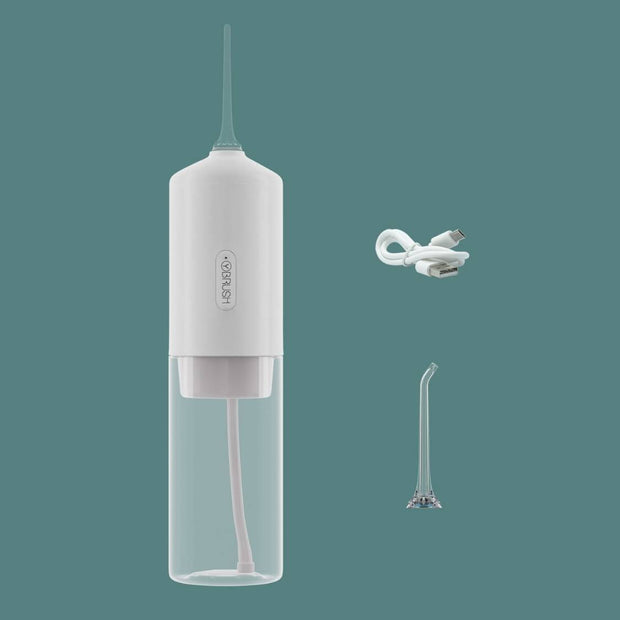

















QUESTIONS FRÉQUEMMENT POSÉES
What is the difference between a dental jet and a water flosser?
The main difference between a dental jet and a water flosser lies in their name. In reality, they refer to the same device. These devices use a pulsed water jet to clean between the teeth, thereby removing food debris and dental plaque in areas that are difficult to reach with a toothbrush. It is common to see the term "water flosser" used by certain brands, while "dental jet" is a more generic term. Regular use of this device can help prevent gum problems and improve oral hygiene.
Can dental floss replace the use of a water flosser?
Dental floss and a water flosser both serve to remove debris between the teeth, but they function differently. Dental floss is a thin strip of material that you manually pass between the teeth to remove dental plaque. The water flosser, also known as a dental jet, uses a pulsed water jet to clean these interdental spaces. While it is effective in removing plaque on the sides of the teeth, the water flosser is particularly useful for cleaning hard-to-reach areas, such as under bridges or around orthodontic appliances. The choice between the two depends on your personal preferences and specific oral hygiene needs.
Is a dental jet good for the teeth?
The water flosser, more commonly known as a dental jet, is an excellent addition to your oral care routine. The water flosser works by using a powerful stream of water to remove trapped food particles and dental plaque that traditional toothbrushes might leave behind. It is particularly effective for cleaning between teeth and around orthodontic appliances. Moreover, the regular use of a water flosser can help stimulate the gums, which is beneficial for periodontal health and can help prevent conditions such as gingivitis.
Why buy a water flosser?
The water flosser has become an essential part of modern oral hygiene routines for several good reasons. First, it offers deep cleaning of interdental spaces, where traditional toothbrushes often struggle to reach. This helps to effectively remove plaque and food residues, thereby reducing the risk of cavities and gum diseases. Moreover, people wearing orthodontic appliances, like braces, often find the water flosser extremely helpful because it can clean around brackets with precision. Additionally, the water flosser stimulates the gums, which may improve blood circulation and contribute to healthier gums. Finally, for those looking to maximize their routine, the water flosser is a valuable tool that perfectly complements brushing and the use of dental floss. Feel free to consult our article to help you choose the right dental jet for you.
Does a water flosser remove tartar?
A water flosser is designed to enhance care by using a powerful water jet to clean between the teeth and below the gumline, helping to remove dental plaque and food debris. However, it is important to note that a water flosser is generally not capable of removing tartar once it has formed and hardened on the teeth. Tartar, which is the result of the mineralization of dental plaque, hardens if not regularly removed by effective brushing. Once tartar has formed, it is very difficult to remove with home oral hygiene devices like water flossers or mouthwashes. Tartar removal typically requires professional intervention performed by a dentist or dental hygienist, who use special tools to scale it off (a process known as scaling). Therefore, while water flossers are excellent for maintaining a clean mouth in a very simple way and can prevent the formation of new tartar by removing plaque before it hardens, they do not replace the professional dental cleanings needed to remove existing tartar.

